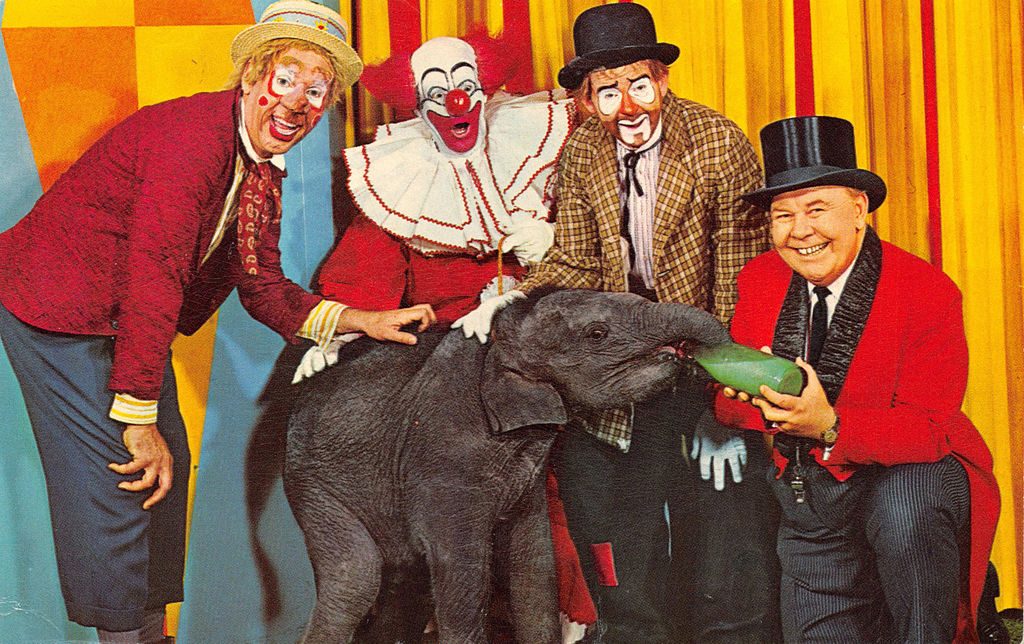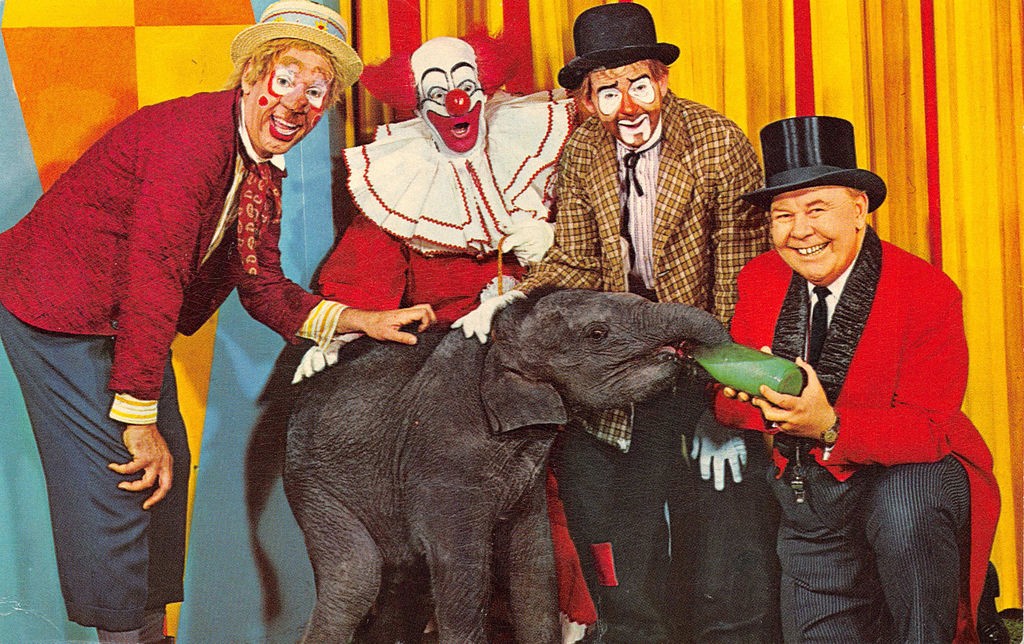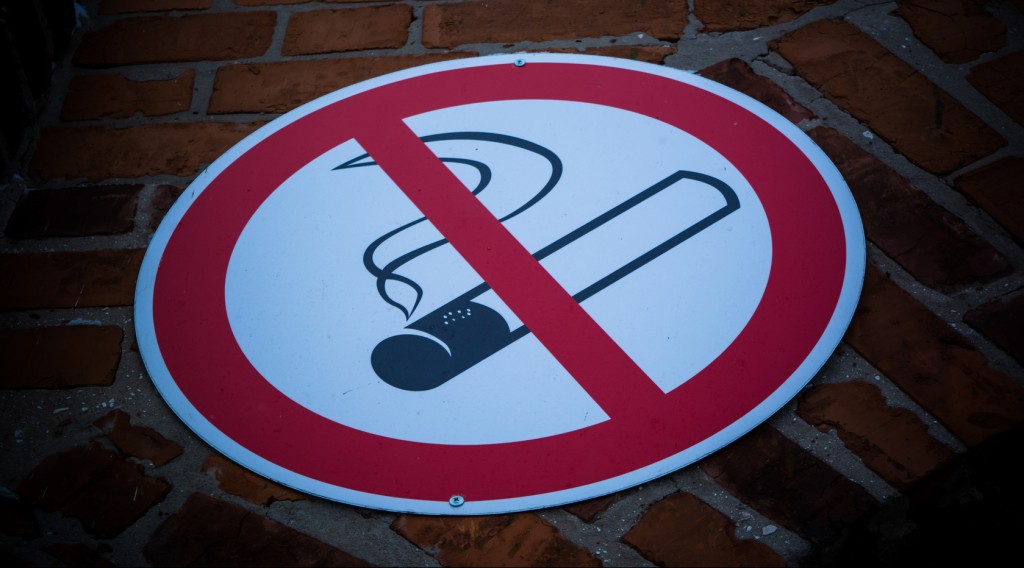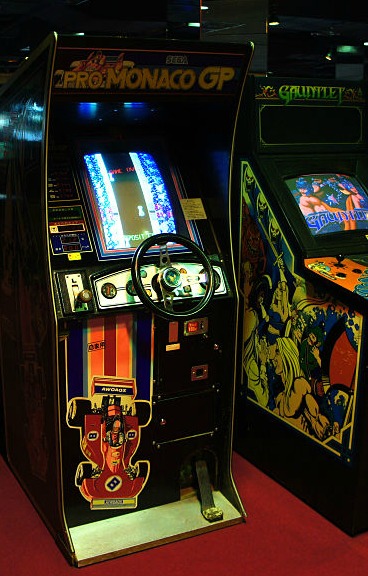This stuff used to be a part of everyday life. Now it’s gone. So where did it all go?
LOCAL KIDDIE TV SHOWS
From the late 1940s to the early 1970s, nearly every American television market had its own locally produced children’s shows. The format was pretty standard: a cowboy/clown/pirate/train engineer/mailman/ringmaster or a guy in an animal suit introduced games, contests, puppet shows, and cartoons. At the height of the era, there were more than 1,400 locally made kids’ shows nationwide—the shows were a cheap and easy way for stations to fill time in little-watched early-morning and late-afternoon hours. The advent of PBS’s all-educational children’s programming killed the cowboys and clowns. Concerned parents urged their kids to watch “educational” shows, such as Mr. Rogers’ Neighborhood, Sesame Street, and The Electric Company, instead.
SMOKING
It’s difficult today to imagine how prevalent smoking used to be. A common image of the 1950s: adults in suits and party dresses standing around at cocktail parties smoking cigarettes. People smoked in restaurants, airplanes, buses, offices, movie theaters. There was almost no place where smoking wasn’t allowed (other than hospitals and elementary schools). Then in 1964, surgeon general Luther Terry announced that doctors had linked smoking with lung cancer. The next year, cigarette packs began to carry a health warning. Smoking has been in decline ever since. In 1964, 40% of American adults smoked. By 2006 only 19% did. It’s now banned in public places (even bars) in most major cities, including Los Angeles, Houston, and New York City.
PAPERBOYS
The job evolved from newsies—
boys of the 1920s and 1930s who hawked papers on city street corners. When the population re-centralized from cities to suburbs, newsies became paperboys. It’s part of an iconic American image: The sun rises, the birds chirp, and the paperboy tosses a newspaper on the porch as he zooms by on his bike. In the mid-20th century, a paper route was often the first paying job for kids as young as nine. But there are still suburbs, and people still read newspapers. So what happened to paperboys?
Most daily papers today are morning papers. Few kids are willing to work at 5:00 a.m. (for $5 an hour), and parents won’t let them work the streets in the dark (on bikes). The Newspaper Association of America says that 81% of carriers are now adults with cars, who can deliver papers faster anyway.
HIT SHOW TUNES
Many of the biggest pop songs of the 1930s, 1940s, and 1950s— including classics like “Some Enchanted Evening” and “You’re the Top”—originated in Broadway musicals, such as South Pacific and Anything Goes. Top composers like the Gershwins, Rodgers and Hammerstein, and Cole Porter wrote for Broadway because it was the best-paying venue available to them. Even into the rock ’n’ roll era, The Ed Sullivan Show still featured performances from a Broadway cast almost every week. And rock music didn’t kill show tunes, either—Louis Armstrong’s “Hello, Dolly” knocked the Beatles out of the No. 1 spot in 1964. What really killed Broadway was Broadway—show tunes didn’t keep up with contemporary musical trends. Major composers gravitated toward movie and TV scores, which are less risky and more lucrative than Broadway. The last hit song from a stage musical was “One Night in Bangkok” by Murray Head, from the 1986 musical Chess.
In the late 1970s and early 1980s, the only place to play video games like Pac-Man and Donkey Kong was at a video arcade. They were popular hangouts for teenagers, which invited criticism from parents’ groups—arcades were viewed as poorly lit dens of iniquity where kids could easily skip school and waste money (many arcades had truant officers on the premises). Even when home systems like Atari and Nintendo hit the market, arcade games remained profitable because they had much better graphics than the home versions. But by the mid-1990s, game systems like the Sony PlayStation had graphics equal (or superior) to those of the arcade machines. By then, arcades were on their way out.













